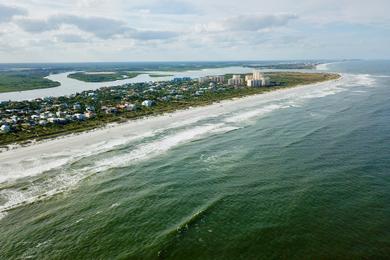Overview
Spinner sharks are characterized by their slender, fusiform bodies, with a long, pointed snout and large, widely spaced eyes. Their coloration is typically gray to blue-gray on the dorsal side, fading to white on the ventral side. Spinner sharks are distinguished from other similar species, such as the blacktip shark, by their distinctive white tips on their pectoral, pelvic, and anal fins. They also have a unique behavior of spinning rapidly in circles, which is thought to be a hunting technique.
Commonly found in:
- Australia
- Bahamas
- Brazil
- Cuba
- Egypt
- Fiji
- India
- Indonesia
- Japan
- Malaysia
- Mexico
- Mozambique
- South Africa
- United States
- Vietnam
Over the past 58 years, there has been 25 recorded spinner shark attacks. Of these attacks, they have occurred at sea and at the following beaches:
Size and Weight
- Size: Males average between 6-7.5 feet when mature; females average between 7-8.5 feet when mature
- Weight: Males typically weigh 120-160 pounds; females typically weigh 160-200 pounds
- Swimming speed: Both sexes can reach speeds up to 20 mph
Interaction with Humans
- Interaction with Humans: Generally non-aggressive, rarely involved in unprovoked attacks
- Avoidance: Stay out of water during their active hours, avoid areas with schools of small fish
- Activity: Most active during dawn and dusk
Lifespan and Diet
- Lifespan: Both males and females live approximately 15-20 years
- Diet: Primarily small fish, squid, and octopuses; hunts by spinning through schools of fish with its mouth open
Migratory Patterns
Spinner sharks exhibit seasonal migratory patterns. They typically move northward along the eastern coast of the United States during spring and summer, starting from Florida and the Gulf of Mexico and traveling as far north as North Carolina. In the fall and winter, they return southward to warmer waters. Some spinner sharks also migrate between coastal areas and offshore waters, moving to deeper waters during colder months.





